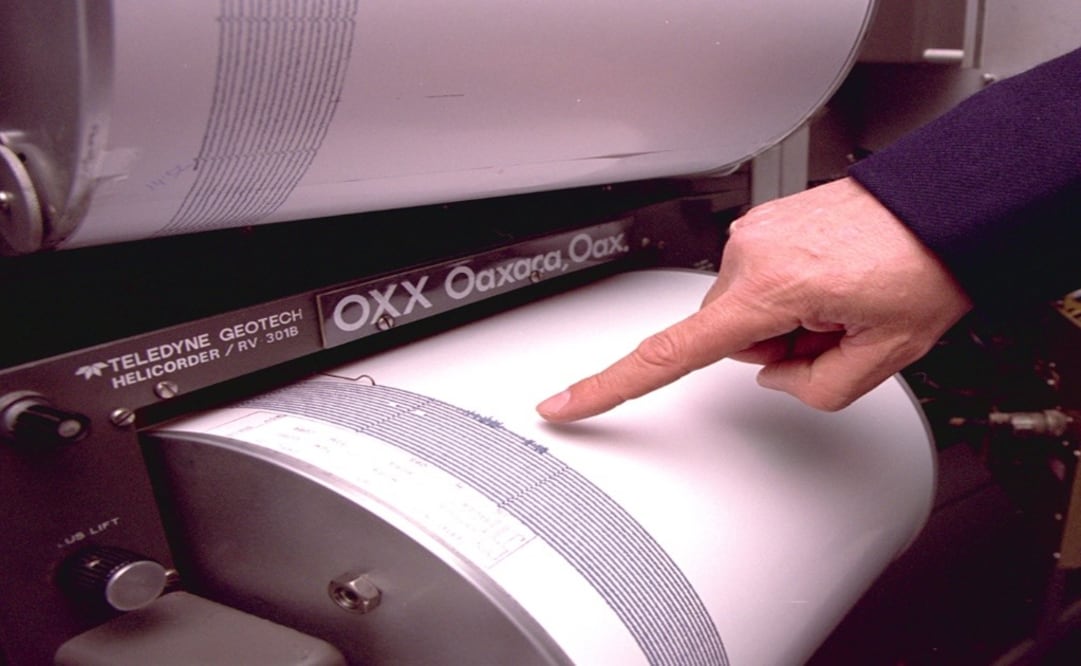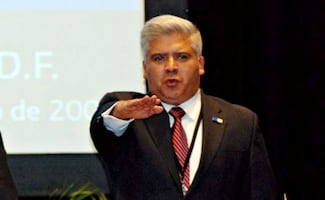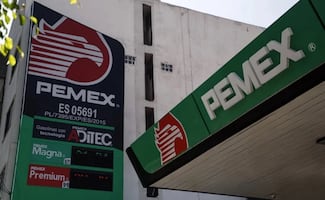Más Información

Mármol con metanfetamina y millones ocultos; las claves de la mayor red de droga en Europa ligada al Cártel de Sinaloa

Trump ordena retiro de EU de 66 organizaciones internacionales; "ya no sirven a los intereses nacionales", señala

Petro conversa con Delcy Rodríguez y propone diálogo tripartito con EU; busca contener crisis en Venezuela

Trump anuncia que Venezuela comprará sólo productos fabricados en EU; inversión incluirá alimentos, medicinas y equipo médico
Leer en español
In recent days, Mexico City has felt several small quake s that have alarmed the population that is still marked by the painful memories of the earthquake of September 19th , 2017 , that caused death s and serious damages all around the city.
On July 12th, 13th, 14th, and 16th , the National Seismological Service (SSN) of the National Autonomous University of Mexico (UNAM) reported eight quakes that were localized in the municipalities of Miguel Hidalgo and Álvaro Obregón , Mexico City.
The first four quakes were registered on July 12th : the first took place at 04:47h with a magnitude of 2.1 ; the second, and one of the biggest, took place at 07:38 h and had a magnitude of 2.5 ; the third took place at 07:51h with a magnitude of 2.0 ; the fourth took place at 10:08h with a magnitude of 2.3 .
On July 13th , there wer e two quakes : one at 01:35h , and another at 11:39 , both of magnitude 2.3 .
On July 14th , another quake was registered at 02:16h with a magnitude of 2.1 .
Between this Tuesday night and the early morning of Wednesday , Mexico City felt up to seven small earthquakes with epicenter in the municipality of Álvaro Obregón .
The SSN confirmed first a quake of magnitude 2.9 in the central Mexico City neighborhood of Álvaro Obregón.
But later, another six movements were registered, with an average magnitude o f 2.4 . In total, seven small quakes were registered last night in Mexico City.
Through its Twitter account, @SSNMexico , the agency detailed that the epicenter was located in the northeast of the mentioned municipality. Although the quakes were also perceived in different municipalities, mostly at the center and West of the capital
The movements were registered with a few minutes of difference. The first three quakes were detected this Tuesday: the first at 22:59h , the second at 23:10 and the third at 23:18 . While on Wednesday, four more were registered: at 00:33h , at 00:41 , at 00:45 and finally, at 01:04h .
The strongest quake took place at 22:59h , latitude 19.41 and longitude -99.22 , and 3km deep.
According to the SSN, last night's quake, along with the one that took place on July 12th at 7:38h are the biggest two in the recent seismic sequence in Mexico City.
The general manager of the Center of Seismic Instrumentation and Register (Cires) , Juan Manuel Espinosa Aranda , said the main cause of the small quakes registered between July 12th and 13th in the municipalities of Miguel Hidalgo and Álvaro Obregón, “we could summarize it in that they are caused by the constant extraction of water from the subsoil, in addition to the big constructions that have caused mayor fractures in the low part of the land,” he said.
In interview with EL UNIVERSAL , the specialist alerted on these telluric movements, “which for now are gentle, could intensify if we do not avoid the extraction of the liquid since with it we will also prevent the sinking of Mexico City , a situation that also generates quakes.”
In addition, he highlighted that we must consider that in Mexico City the quakes of slight intensity are associated with six geological faults: Chiquihuite, Santa Catarina, Falla Santa Fe, Ayotuzco, Tenango, and La Pera.
According to a special report of the SSN, even though the magnitudes of the recently registered quakes were low, they were felt in different zones of the capital, due to the proximity of the epicenter and its low depth .
“We must remember that the closer the epicenter is, the more seismic waves are attenuated , and the bigger the distance, the stronger the quake feels, as was the case with these events,” added the specialist.
He reiterated that the constant extraction of water from the subsoil has eroded or removed the layers of clay and other materials that cause the sinking of the capital, since “we do not allow the filling of the groundwater reserves with enough liquid coming from the Basin of Valley of Mexico .
Likewise, he considered that these events could happen as a result of the accumulation of regional tension , or because the sinking of the Valley of Mexico could originate tensions that, although they don’t generate quakes per se, it could increase them.
He sustained that the Basin of the Valley of Mexico , where the city is located, is over one of the most important physiographical features of the country: the Trans-Mexican Volcanic Strip , which goes from the Gulf of Mexico to the Pacific Ocean.
Although in this area there are also volcanic remanents, where the Popocatépetl (active right now), the Iztaccíhuatl , the Ajusco , and in the State of Mexico , the Nevado de Toluca.
Therefore, the seismic activity in the Basin and its surroundings “ is sparse and of low magnitude ,” although sometimes there are registers of several movements per year, like the recent ones.
Espinosa Aranda detailed that the composition of the soil of Mexico City is of great relevance, “since high seismicity is concentrated in soft ground , which is localized in some parts of the Valley of Mexico.”
Thus the worry of hundreds of buildings not complying with the construction rules , “since no one knows what will happen with them in future quakes.” Upon these contingencies, he said, “a correct and rational construction is our best tool.”
He specified that in Mexico City, 38 out of the 40 buildings that collapsed on September 19th, 2017 are previous to the quake of 1985 of magnitude 8.1, which gave place to changes in the regulations of construction.
“Th e earthquake of September 19th, 1985 , was stronger for buildings for up to 15 floors, but regarding low buildings, it was smaller. But the one of 2017 induced stronger forces in low buildings than the earthquake 34 years ago. That is, these impacts depend on the size of the building, its frequency of vibration , and if the forces of inertia are bigger or smaller,” he said.
For her part, the Mayor of Mexico City, Claudia Sheinbaum , informed that the authorities from the capital will meet this Wednesday with a group of experts to evaluate the last quakes registered in the capital of the country.
Through her Twitter account, the Mayor said that after the registered quakes this night, protocols of care were activated and no damage is reported. She also said that she would have a meeting at noon with specialists from the SSN, Civil Protection, the UNAM, and the IPN. A report will be given after the conclusion of the meeting.
mp
Noticias según tus intereses
[Publicidad]
[Publicidad]











